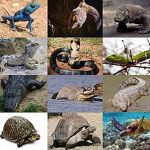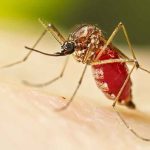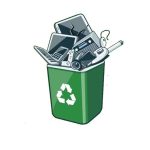N. Munal Meitei
Environmentalist email: nmunall@yahoo.in

The 3rd Friday of May is World Endangered Species Day observing to raise awareness of the continued plight of endangered species and celebrate those that have recovered because of conservation efforts. Globally, many governments, NGOs and grassroots efforts have made great strides to protect such natural heritages.
Earth is home to more than 16,000 species of plants, animals, fungi and algae that are currently listed as endangered on IUCN Red List of Threatened Species. Man-made threats – such as habitat fragmentation, over hunting, overfishing, global warming, invasive species and pollution – are the major drivers of our modern extinctions. The preservation and recovery of endangered species depend on human awareness and intervention.
Species extinction is the most obvious aspect of the loss of biodiversity. A species that survives extinction can lose much of its genetically distinct diversity and populations in its original range. Ecosystems may shrink dramatically and lose many of their functions if we lost endangered species.
Endangered species play a critical role in maintaining the balance of our ecosystems. Every species, regardless of its size or significance, contributes to the overall health and resilience of the environment. The loss of a single species can have far-reaching consequences. The removal of a predator, for instance, can lead to an overpopulation of its prey, resulting in imbalances throughout the food chain.
Conservation is a crisis discipline. By analogy, ecology and conservation have the same relationship as physiology and medicine. Conservation techniques to prevent the loss of biodiversity involve issues of economics, law, social sciences, culture and religions. Extinction is a natural process that would happen with or without humans. But, present day rate of extinctions are happening much quicker than ever before.
Everything in nature is connected. For example, bees may be small and insignificant, but they have a huge role to play in our ecosystem – they are pollinators. They are responsible for the reproduction plants. Without bees, many plant species would go extinct breaking the entire food chain and medicines for survival.
According to the International Union for Conservation of Nature, IUCN Red List of Threatened Species, over 26,500 species are in danger of extinction. This includes 40% of amphibians, 34% of conifers, 33% of reef-building corals, 25% of mammals and 14% of birds.
Species become endangered for two main reasons: loss of habitat and loss of genetic variation. Roughly 99% of pervasive species lost is caused from human activities – that is, the large-scale conversion of land in previously undisturbed areas driven by the growing demand for housing, industry, agriculture, logging and infrastructure development.
Trees provide habitat for many species. As trees are destroyed, species that depend on that tree may also become endangered. So hundreds of species of birds and mammals including vines, fungi such as mushrooms and insects such as butterflies become threatened. Loss of habitat can also lead to increased encounters between wild species and people.
The IUCN Red List has seven levels of conservation: least concern, near threatened, vulnerable, endangered, critically endangered, extinct in the wild and extinct. Each category represents a different threat level. Species that are not threatened by extinction are placed within the first two categories – least concern and near-threatened. Those that are most threatened are placed within the next three categories – vulnerable, endangered and critically endangered. Those species that are extinct in the last two categories—extinct in the wild and extinct.
One of the objectives for saving endangered species is the pleasure that we got out of seeing and interacting with these species will no longer around us and to future generations except they are seen and learnt in books and on records.
The IUCN Red List brings into focus the ongoing decline of Earth’s biodiversity and challenges. According to the IUCN, at least 40% of animals, insects and plants are at risk of extinction across the world. By 2024 more than 157,000 species had been assessed by using the IUCN Red List categories and criteria. They can also analyze the threats and conservation measures that underpin the observed trends.
To prevent the overexploitation of species, CITES now with 183 countries since 1973 have sorted out 5,800 animal and 30,000 plant species into three appendixes. Appendix I lists, the species in danger of extinction. It also prohibits outright the commercial trade of these species; however, some can be traded in extraordinary situations for scientific or educational purposes. In contrast, Appendix II lists particular plants and animals that are less threatened but still require stringent controls. Appendix III lists species that are protected in at least one country that has petitioned other countries for help in controlling international trade in that species.
Undescribed or unassessed species of plants, animals and other organisms have become common victims for extinct. To maintain healthy populations of these species, assessments and reassessments are valuable tools. Such monitoring and management efforts will surely help to save them. Because the world has lot more things to discover and invent.
World’s climate has force many species to migrate toward the poles and up mountain slopes in order to remain in habitats with the same climate conditions. Global warming is expected with prediction of 5.2% of species extinctions with rise of 2°C. All these factors have increased the numbers of threatened species. Almost 1 in 4 mammals and 1 in 8 bird species are considered at risk of extinction. Captive breeding in some ways, are helping to conserve rare endangered species and encourage to breed to improve their numbers.
Beings who’ve succeeded on earth for millions of years is not the requirement and for approval. Endangered species have their own right and they belong as well and as much as anyone of us on this earth. Who are us to decide for their existence? We human has no right to judge, hurtling them with the discrimination of bigger, faster or wise.












